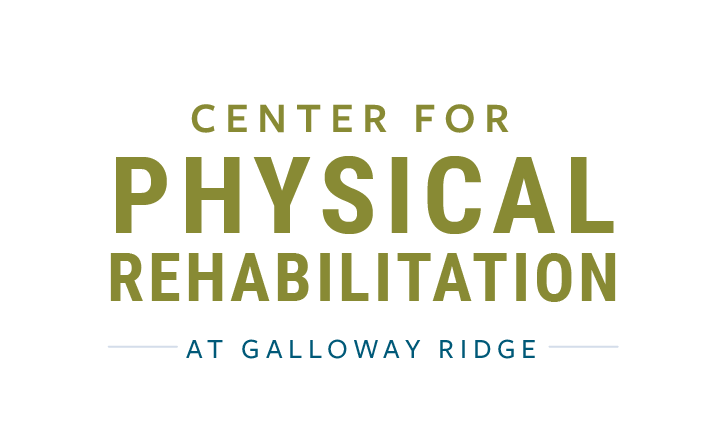If you’ve ever felt a sharp, shooting pain that starts in your lower back and runs down your leg, you already know how disruptive sciatica can be. For some, it feels like a dull ache that never quite goes away. For others, it’s an intense jolt that makes it hard to sit, stand, or even sleep.
Thankfully, you don’t have to live at the mercy of your symptoms. Physical therapy for sciatica is a safe, effective treatment that provides lasting relief by addressing the root cause of the pain.
Through guided stretches, strengthening exercises, and simple changes to posture or movement, physical therapy can ease pressure on the sciatic nerve and help you feel more in control of your recovery.
In this guide, we’ll look at what causes sciatica, why flare-ups happen, and how physical therapy exercises and stretches can be tailored to your needs. You’ll also learn when it’s time to check in with a doctor for extra support.
Understanding Sciatica and Its Triggers
Sciatica isn’t a condition on its own, but rather a set of symptoms caused by irritation or compression of the sciatic nerve. This nerve runs from the lower back through the hips, buttocks, and each leg, which is why pain can travel so far.
Common reasons for developing sciatica include a herniated disc pressing on the nerve, spinal stenosis, or muscle tightness in the lower back and hips. In some cases, pregnancy sciatica develops as extra weight and shifting posture put added strain on the spine.
Symptoms often include sharp, shooting pain down one leg, tingling or numbness, and muscle weakness. These can range from mild irritation to pain that makes walking or sitting nearly impossible.
A sciatica flare up may be triggered by prolonged sitting, sudden twisting, or even stress that causes muscles to tighten. Recognizing and managing these triggers is key, because the more consistently you protect and support your back, the fewer flare ups you’ll face over time.
How Physical Therapy Helps Sciatica
When sciatica strikes, it may be tempting to rest until the pain fades. While short periods of rest can help, staying inactive for too long often makes symptoms worse. That’s because weak or tight muscles put more pressure on the sciatic nerve. This is where sciatica treatments and physical therapy come in.
A physical therapist designs a plan tailored to your body and your lifestyle. That plan usually combines gentle stretching to ease tension, strengthening exercises to support the spine, and posture training to reduce pressure on the nerve.
Over time, this approach does more than relieve pain. It improves flexibility, builds resilience, and lowers the risk of future flare ups.
Compared to relying only on pain medication, physical therapy offers lasting benefits. It teaches you how to move in ways that protect your back and legs, giving you the tools to take control of your recovery and return to the activities you enjoy.
Best Stretches for Sciatic Nerve Relief
One of the most effective ways to calm sciatic pain is through stretching. When the muscles around the lower back, hips, and legs are tight, they can squeeze or irritate the sciatic nerve.
Incorporating targeted stretches for sciatic nerve relief helps reduce this tension, improves flexibility, and creates space for the nerve to move freely.
Here are a few gentle but powerful stretches often recommended in physical therapy:
- Piriformis Stretch – The piriformis muscle sits deep in the hip and, when tight, can irritate the sciatic nerve. Lying on your back, cross one ankle over the opposite knee and gently pull the lower leg toward your chest.
- Knee-to-Chest Stretch – While lying on your back, bring one knee up toward your chest, holding it with your hands to release tension in the lower spine.
- Seated Spinal Twist – Sitting tall, cross one leg over the other and gently twist your torso toward the bent knee to increase spinal mobility.
- Cat-Cow Stretch – On hands and knees, alternate arching and rounding your back to loosen the spine and ease stiffness.
Consistency matters more than intensity. These stretches should only feel like a gentle pull and should never cause sharp pain. Practicing them regularly can help ease discomfort during a sciatica flare up and prevent future episodes.
Physical Therapy Exercises for Strength and Recovery
While stretches help reduce tightness, strengthening exercises are just as important in long-term recovery from sciatica. A strong core and stable lower back provide better support for the spine, reducing strain on the sciatic nerve. This means fewer painful flare ups and more confidence in daily movement.
Some physical therapy exercises often recommended for sciatica include:
- Bridges – Lying on your back with knees bent, lift your hips toward the ceiling. This strengthens the glutes and core, which stabilize the lower spine.
- Pelvic Tilts – With your back on the floor and knees bent, gently flatten your lower back against the ground, then release. This improves spine mobility and strengthens deep abdominal muscles.
- Bird-Dog – From a hands-and-knees position, extend one arm forward and the opposite leg back, holding briefly before switching sides. This builds balance and core stability.
- Clamshells – Lying on your side with knees bent, lift the top knee while keeping feet together. This targets the hip muscles that support proper alignment.
These exercises should start gently and progress under the guidance of a therapist to ensure safety and effectiveness. Over time, they not only ease current discomfort but also reduce the chances of another sciatica flare up by improving overall spinal health.
Knowing When to See a Doctor
While many people find relief from sciatica through stretches and physical therapy, there are times when medical care is necessary.
If your pain is severe, persistent, or accompanied by muscle weakness, it’s a sign to get evaluated. More urgent symptoms like sudden loss of bladder or bowel control require immediate medical attention.
You may wonder, what kind of doctor treats sciatica? In most cases, your primary care physician is the best starting point. They can rule out serious underlying issues and may refer you to a specialist such as an orthopedist, neurologist, or pain management doctor.
Often, these providers will recommend working with a physical therapist as part of your recovery plan.
Early treatment not only helps ease current pain but also reduces the risk of long-term nerve damage. If your sciatica doesn’t improve with home care, don’t wait. Getting the right support can make a significant difference in how quickly you recover.
Conclusion
Living with sciatica can be frustrating, but relief is possible. Physical therapy provides long-term benefits by easing pain, improving strength, and lowering the risk of future flare ups.
Simple, consistent routines including gentle stretches for sciatic nerve relief can make daily movement more comfortable and support lasting recovery.
If your symptoms linger or worsen, don’t hesitate to seek professional guidance. With the right treatment plan, most people are able to regain mobility, reduce pain, and return to the activities they enjoy. Sciatica doesn’t have to define your everyday life.
Important Note: This Blog Is Not a Substitute for Medical Care
The information in this article is meant to be educational and supportive, but it should not replace professional medical advice. Every case of sciatica is different, and what works for one person may not be appropriate for another.
Before beginning any new exercise routine—especially if you are pregnant, have chronic health conditions, or are experiencing severe symptoms—consult your healthcare provider or a licensed physical therapist. They can help tailor a treatment plan that is safe and effective for your specific needs.
Ready for a Healthier Lifestyle? Contact the Center for Physical Rehabilitation at Galloway Ridge Today!
At Galloway Ridge, we’re here to support you every step of the way with personalized care that fits your needs. If you have questions about physical, occupational, or speech therapy services—or you’re ready to schedule your first visit—we’re here to help you get started with confidence.
For more information about physical therapy for sciatica treatment, give us a call at (919) 545-2633. To learn more about how you can improve your health and lifestyle, check out our blog.

